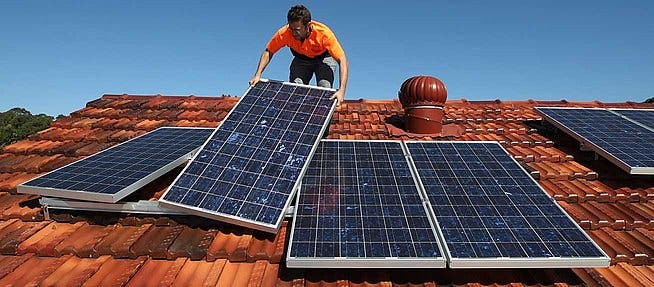According to a report issued by the Solar Foundation, jobs in the solar industry were added at a rate 20 times that of the national average. In absolute numbers, 31,000 solar jobs were added in the U.S. between November 2013 and November 2014, bringing the total number of employees to 173,807, 87 percent more than five years ago.
Solar catching up
The report found that most employees (55.8 percent) work jobs related to solar installation, while solar manufacturing accounts for 18.7 percent of jobs, sales and distribution accounts for 11.6 percent, and project development accounts for 8.7 percent. The leading states in solar installation are California, North Carolina, Massachusetts, and New York, while Georgia, Indiana, Virginia, and Tennessee are quickly catching ground.
It’s also worth mentioning that the solar sector added 50% more jobs than the oil and gas pipeline construction industry and the crude oil and natural gas extraction industry. Despite this, the number of jobs in oil&gas easily trump solar – and they’re also growing. From the start of 2007 through the end of 2012, the oil and natural gas industry increased by more than 162,000 jobs, a 40% increase most likely driven by the shale boom. The oil & gas industry employs 9.8 million people, both directly and indirectly. But while judging from absolute numbers, oil easily outweighs solar, it’s still nice to see that the renewable industry is catching up and quick pace.
Solar jobs are expected to continue to grow in 2015, predicting that more than 36,000 jobs will be added over the next 12 months. Overall, the report found that one out of every 78 jobs created in the U.S. last year were related to solar. A report released by the same Solar Foundation last year found that one out of every 142 jobs created in the U.S. was in the solar industry. According to the report, solar installers make an average of about $20 to $24 per hour, and solar salespeople can make $30 to $60 per hour.
via Think Progress











